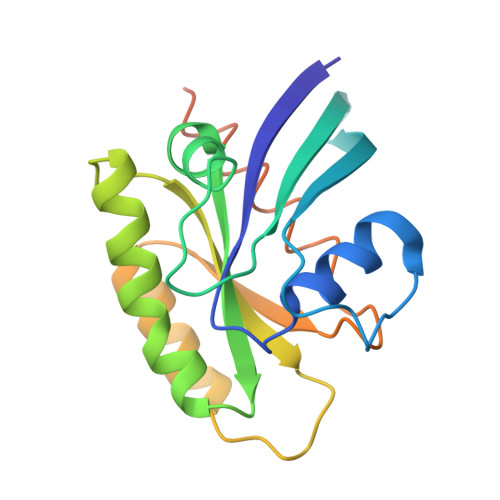Molecular switch for signal transduction: structural differences between active and inactive forms of protooncogenic ras proteins.
Milburn, M.V., Tong, L., deVos, A.M., Brunger, A., Yamaizumi, Z., Nishimura, S., Kim, S.H.(1990) Science 247: 939-945
- PubMed: 2406906
- DOI: https://doi.org/10.1126/science.2406906
- Primary Citation of Related Structures:
4Q21, 6Q21 - PubMed Abstract:
Ras proteins participate as a molecular switch in the early steps of the signal transduction pathway that is associated with cell growth and differentiation. When the protein is in its GTP complexed form it is active in signal transduction, whereas it is inactive in its GDP complexed form. A comparison of eight three-dimensional structures of ras proteins in four different crystal lattices, five with a nonhydrolyzable GTP analog and three with GDP, reveals that the "on" and "off" states of the switch are distinguished by conformational differences that span a length of more than 40 A, and are induced by the gamma-phosphate. The most significant differences are localized in two regions: residues 30 to 38 (the switch I region) in the second loop and residues 60 to 76 (the switch II region) consisting of the fourth loop and the short alpha-helix that follows the loop. Both regions are highly exposed and form a continuous strip on the molecular surface most likely to be the recognition sites for the effector and receptor molecule(or molecules). The conformational differences also provide a structural basis for understanding the biological and biochemical changes of the proteins due to oncogenic mutations, autophosphorylation, and GTP hydrolysis, and for understanding the interactions with other proteins.
Organizational Affiliation:
Department of Chemistry, University of California, Berkeley.
















